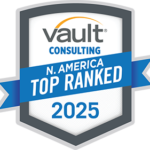Leading In5 is part of our commitment to helping leaders find creative ways to navigate and grow during these times of incredible post-COVID opportunity and phenomenal growth. We are interviewing top business leaders from across sectors for their insights into leadership and success in transformational moments.
Lesley Gallinger is a very well-established and highly respected leader in the energy sector. She is the President and CEO of the Independent Electricity System Operator (IESO) and has spent over sixteen years in the sector, including having been the CEO of Elexicon Energy and Chief Strategy and Financial Officer for Electrical Safety Authority (ESA).
Lesley and I originally started working together in her time at ESA where she brought in Level5 to support the development of a new and transformative strategic plan. Since that engagement, we have worked together a number of times on both strategic and transformation-based initiatives. Throughout, I have been struck by how strongly she supports her teams, works with her stakeholders, and ensures she galvanizes energetic support from all who are needed to enact significant strategic shifts. I have seen her leadership in action and knew she would impart great wisdom in a discussion on the topic.
I was grateful to have the opportunity to dive deep on the topic of leadership with Lesley – in particular, the most critical skills for leaders today and how to develop them.
These lessons are condensed from our conversation.
Be Curious, and Action That Curiosity
“It was my curiosity and natural desire to understand how things work that became the catalyst for pointing me as an individual and my career in a leadership direction.”
Lesley and I share the belief that when the world is changing so fast, the most effective way to lead is to have a genuine curiosity about the “why” behind everything, and to then demonstrate this interest across teams.
“The way to apply curiosity is to ask high level questions that help leaders make more informed decisions, without diving too deep into the minutiae. You can’t go in as a leader, thinking you know the answer. To be a successful leader means you have to be curious about how things develop and ask questions in order to make things better.”
Asking more effective and strategic questions does require more than just curiosity. Leaders need to have a sufficient background and experience to be able to ask good questions.
People always talk about the power of listening. Great leaders listen actively, which entails asking the right questions – at the right level and in the right way – to elicit the answers you need and to help propel a team.
I continuously see this in my client work as well since a significant part of what a consultant needs to do is ask the right question.
The additional upside is that good questions also show your team that you are interested in or seeking to understand their work and how it contributes to the organization; it also demonstrates a level of empathy that further motivates the team.
From Answers to Outcomes
“Leadership is the ability to ask the questions, that prompt the answers, which leaders can then distill into meaningful insights or outputs to guide decision making and contribute to a larger vision or direction for the organization as a whole. And it’s the role of leadership to frame those decisions in a way that connects with employees and teams, because they see how it advances a vision and direction that they believe in. “
It’s important to highlight that the role of a leader is to help channel and apply the inputs that come in – but not to have all the answers, or worst of all, think that they need to be “the smartest person in the room.”
Identifying the “Personality” of your organization
As a leader, investing the time to truly understand the “personality” or “character traits” of how your organization thinks and operates will help you decide how to approach decision-making.
“One of my proudest and biggest career successes was navigating the Elexicon merger and bringing the two halves together. Within that, I set the bar high for culture and it became a true labour of love. Appreciating and then integrating the culture of the organization into the strategy was essential. This meant engaging the grassroots of the organization and getting them involved in defining the culture, and then leading through the implementation.”
“Culture is always two steps forward, one step back, so this was a unique opportunity to unearth and call-out any unfortunate cultural behaviors that were hampering the success of the organization.”
Unleash and empower your team
“To be an effective leader means you can make a vision become reality, and that requires the ability to ignite and unleash the talent of your team. During the Elexicon integration, I was awestruck by the level of participation from the organization and the quality of the output. The starting point for this discussion was making sure we had common ground on what we wanted the culture to be. And then I unleashed the talent of the team to make it happen.”
“It’s important for leaders to explicitly give people the license to do something, permission to experiment. And it’s incredible the degree of pride that employees have when they can do work like this. It’s inspiring.”
“Finally, there are a lot of intelligent and dedicated people in any organization and harnessing that energy and those talents is the goal of leadership. To be effective, in turn, requires a genuine openness to relevant feedback and constructive criticism.”
Actively look to build a diverse team and reduce unconscious bias
“Like most of the industry, our company is not gender equal at the leadership level, but it does get better when you go deeper into the organization, where over 47% of staff are diverse (Gender, culture, etc.).”
“As a female CEO in the energy sector, I’m often the only woman in the room. In the last ten years, we’ve done better addressing overt discrimination, but now it’s unconscious bias which is hampering us, and conscious leadership is needed to address it.”
“This requires leaders to be self-aware and check in to assess whether they are unconsciously excluding someone from a meeting or event or doing things like asking the only woman in the room to take notes or get the coffee.”
This last point on conscious leadership is so powerful. Regularly taking a moment to intentionally consider, for example, who you might be including or excluding from a meeting, from an opportunity or project, and then adjusting as needed, is so simple yet so impactful. Without those brief moments of thoughtful self-reflection, the unconscious aspects can’t become conscious, they can’t be improved. We all need to remind ourselves to be intentional about taking those moments because these small investments can lead to massive pay-offs in terms of our impact and for our organizations.
I’m incredibly grateful to Lesley for sharing her insights and reflections on leadership. If you or someone on your team would be like to be featured in Leading In5 please get in touch:
Efram Lebovits,
Managing Partner
E: elebovits@level5strategy.com
A sincere thank you to my colleague Erika Siegert for her contributions to the development of this piece.




